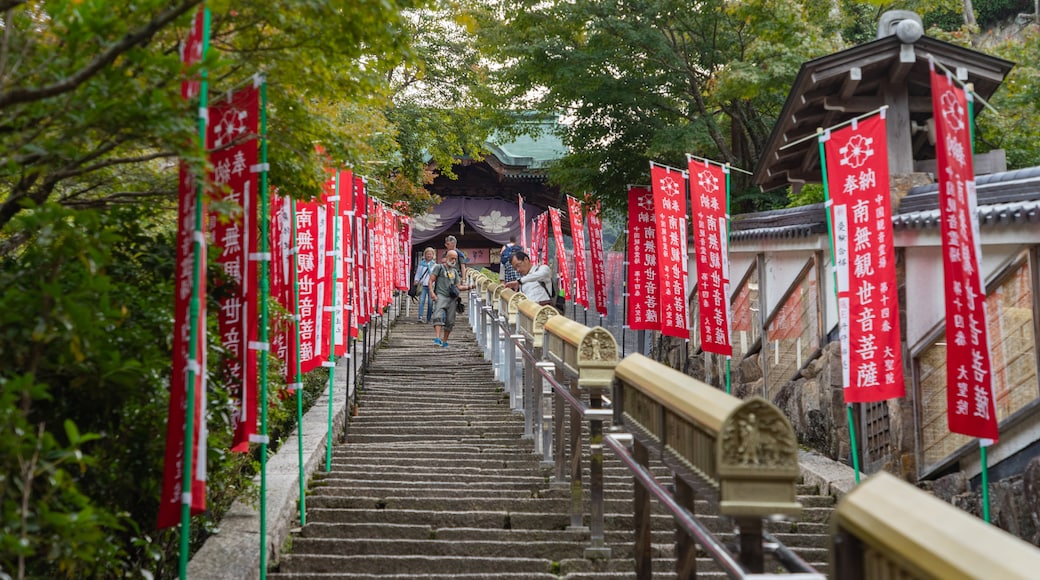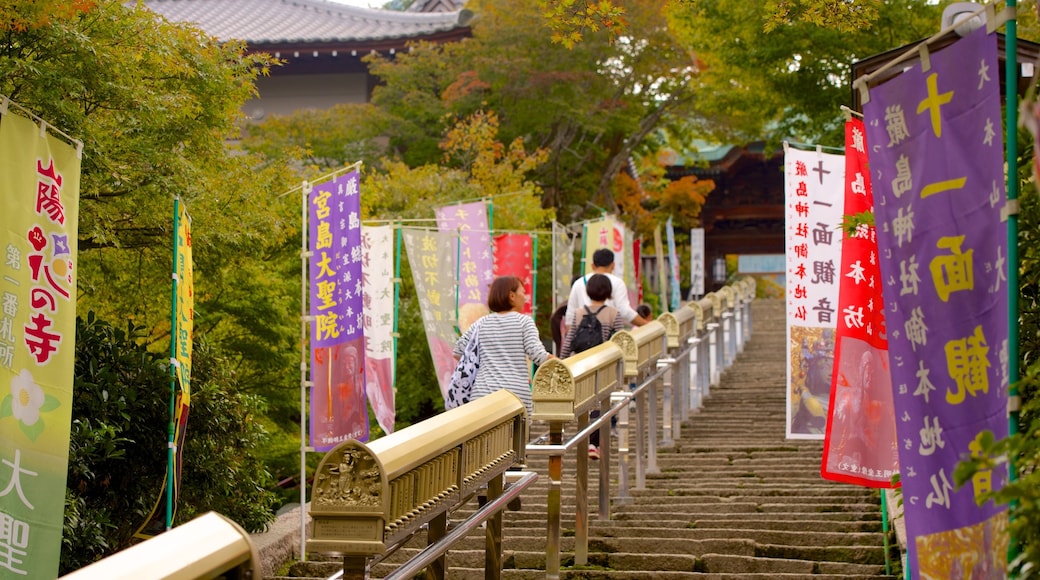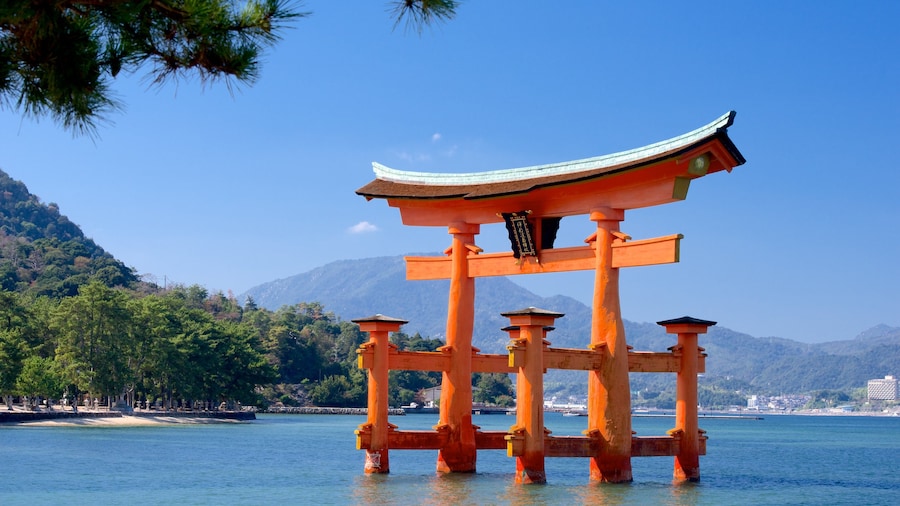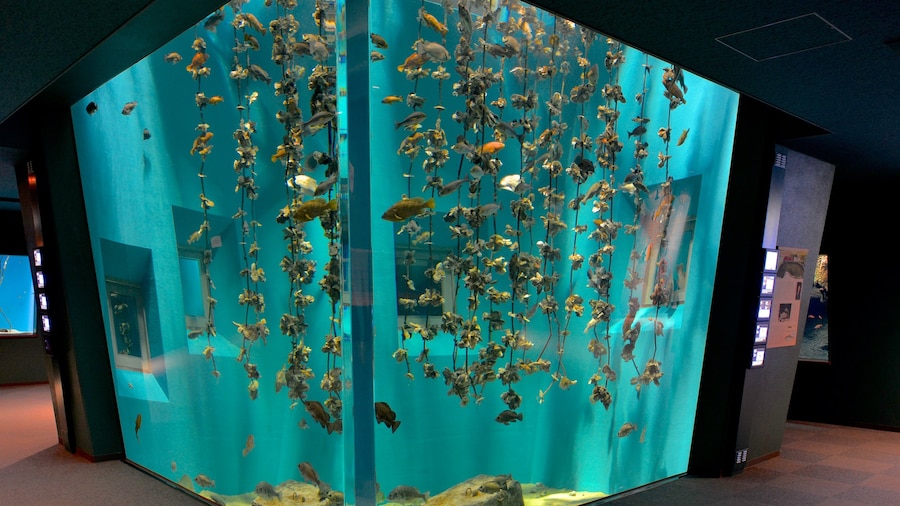Wander around the enchanting gardens of this temple and check out traditional Buddhist structures on Mount Misen, the holy mountain of Miyajima.
Daisho-in (Daishōin) is a significant Shingon Buddhist temple on Miyajima (Itsukushima) Island. Admire the temple’s elegant buildings, statues and sacred spaces, set within a serene forest of Japanese maple, cypress and pine trees. Watch locals and visitors participating in Buddhist rituals and find a little good fortune of your own.
Enter Daisho-in’s grounds via its imposing Niomon Gate, adorned with colorful “noren” flags. Climb the steps, which are edged with waving flags. Along the step’s central rail, you’ll see a row of spinning metal cylinders, inscribed with sutra (Buddhist scriptures). Spin the cylinders as you walk up the stairs to be granted the sutra’s blessings.
Wander around the temple’s relaxing gardens to appreciate its sacred atmosphere. In autumn, see maple leaves turning into a blaze of orange and red tones. Check out the Kannon-do Hall, embellished with ornate wooden carvings and gold decorations. Admire the teahouse and the well-manicured ornamental gardens, featuring small Buddhist statues.
The Maniden Hall is a magnificent double story structure with an intricate pagoda-style roof. See the small frame of “omikuji” at its front. These paper slips bear messages telling of good or bad fortune. Tie one to a tree branch after drawing it. You can also see a sand mandala, which was created by visiting monks from Tibet, as well as a cave filled with 88 icons. The icons represent the temples of the Shikoku Pilgrimage.
From the main grounds of Daisho-in, follow a hiking trail leading to the Mount Misen summit. The climb takes about 1.5 hours and passes a few more temples and shrines.
Daisho-in is located on the northwest side of Miyajima (Itsukushima), the sacred island in Hiroshima Bay. Catch a ferry across the Onoseto Strait from Miyajimaguchi Train Station. Miyajimaguchi is about a 25-minute train ride from Hatsukaichi and 30 minutes from Hiroshima Station. The temple is free to enter, but be sure to respect those using the space as a place of worship. While visiting Miyajima, don’t miss the magnificent Itsukushima Shrine and its iconic torii gate, both of which appear to float over the water.









